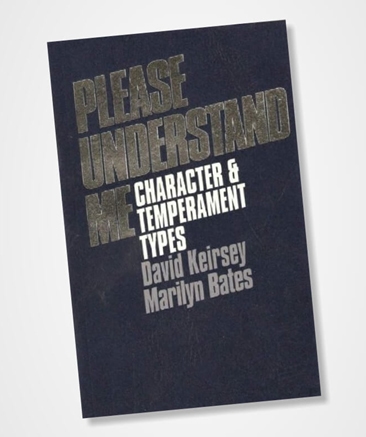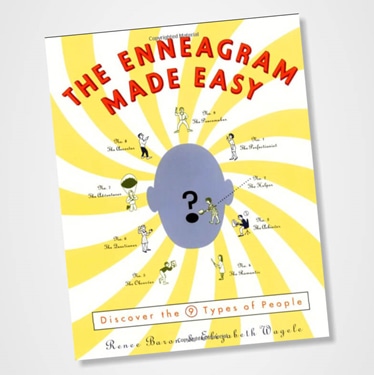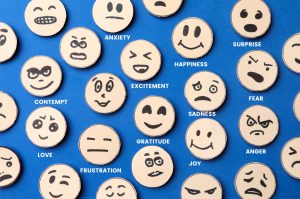“Know yourself to improve yourself.”
August Comte.
It is remarkable how many of my clients in the last forty years have leapt at the opportunity to embark on the journey of enlightenment about themselves.
It has been almost equally fascinating how many clients I have encountered who admitted to feeling fearful and almost dreaded the prospect of discovering more about themselves
As a first step on the coaching journey Danny offers the opportunity to deepen self-awareness using a range of world-class and reliable questionnaire based instruments.
Danny has been encouraging coaching clients to benefit from temperament profiling instruments that include the Enneagram and especially, the Keirsey Temperament Sorter for almost 40 years.
Also part of the self-awreness journey is the Gallup Clifton Strengthsfinder.
The Keirsey Temperament Sorter (KTS).
Keirsey transforms your understanding of people and provides you with a unique perspective that brings clarity on who you are, what you do, who you love, and what difference you make.
Keirsey offers an integrated system of solutions for your most important people opportunities and challenges. We provide four areas of service which include: assessments; workshops; coaching; and certifications.
Keirsey’s Please Understand Me series has sold more than 4 million copies.
Over 100 million people from 170+ countries have experienced Keirsey.
Keirsey has been translated into more than 20 different languages.
More than 75% of the Fortune 500 have engaged Keirsey.
All branches of the United States military utilize Keirsey.
More than 10,000 people use Keirsey on a daily basis.
The Gallup Test
The Gallup Test is a common name for the psychometric instrument CliftonStrengths, formerly called StrengthsFinder, developed by the Gallup Institute.
The test was invented by Don Clifton and is known also as the Gallup Strengths Assessment or Clifton Strengths Test.
It is an online personality-assessment tool that focuses on 34 themes that make up the user’s personality; Gallup uses the tool as part of its consulting.[4][5]
The test is widely used when assessing candidates or considering employees for internal promotions.
The 34 themes are divided into 4 categories:
- strategic thinking: Analytical, Context, Futuristic, Ideation, Input, Intellection, Learner, Strategic;
- relationship building: Adaptability, Connectedness, Developer, Empathy, Harmony, Includer, Individualization, Positivity, Relator;
- influencing: Activator, Command, Communication, Competition, Maximizer, Self-Assurance, Significance, Woo;
- executing: Achiever, Arranger, Belief, Consistency, Deliberative, Discipline, Focus, Responsibility, Restorative
The Enneagram
Your Basic Personality Type
The Enneagram can be seen as a set of nine distinct personality types, with each number on the Enneagram denoting one type. It is common to find a little of yourself in all nine of the types, although one of them should stand out as being closest to yourself. This is your basic personality type.
Everyone emerges from childhood with one of the nine types dominating their personality, with inborn temperament and other pre-natal factors being the main determinants of our type. This is one area where most all of the major Enneagram authors agree—we are born with a dominant type.
Subsequently, this inborn orientation largely determines the ways in which we learn to adapt to our early childhood environment. It also seems to lead to certain unconscious orientations toward our parental figures, but why this is so, we still do not know. In any case, by the time children are four or five years old, their consciousness has developed sufficiently to have a separate sense of self. Although their identity is still very fluid, at this age children begin to establish themselves and find ways of fitting into the world on their own.
Several more points can be made about the basic type itself.
1. People do not change from one basic personality type to another.
2. The descriptions of the personality types are universal and apply equally to males and females, since no type is inherently masculine or feminine.
3. Not everything in the description of your basic type will apply to you all the time because you fluctuate constantly among the healthy, average, and unhealthy traits that make up your personality type.
4. The Enneagram uses numbers to designate each of the types because numbers are value neutral— they imply the whole range of attitudes and behaviors of each type without specifying anything either positive or negative. Unlike the labels used in psychiatry, numbers provide an unbiased, shorthand way of indicating a lot about a person without being pejorative.
5. The numerical ranking of the types is not significant. A larger number is no better than a smaller number; it is not better to be a Nine than a Two because nine is a bigger number.
6. No type is inherently better or worse than any other. While all the personality types have unique assets and liabilities, some types may be considered to be more desirable than others in any given culture or group. Furthermore, for one reason or another, you may not be happy being a particular type. As you learn more about all the types, however, you will see that just as each has unique assets, each has unique liabilities. The ideal is to become your best self, not to imitate the assets of another type.
Do you know your natural dominant tendencies? Your type? Get in touch with Danny.
Tel: 07850 143 209
Email: email@dannymcguigan.com









